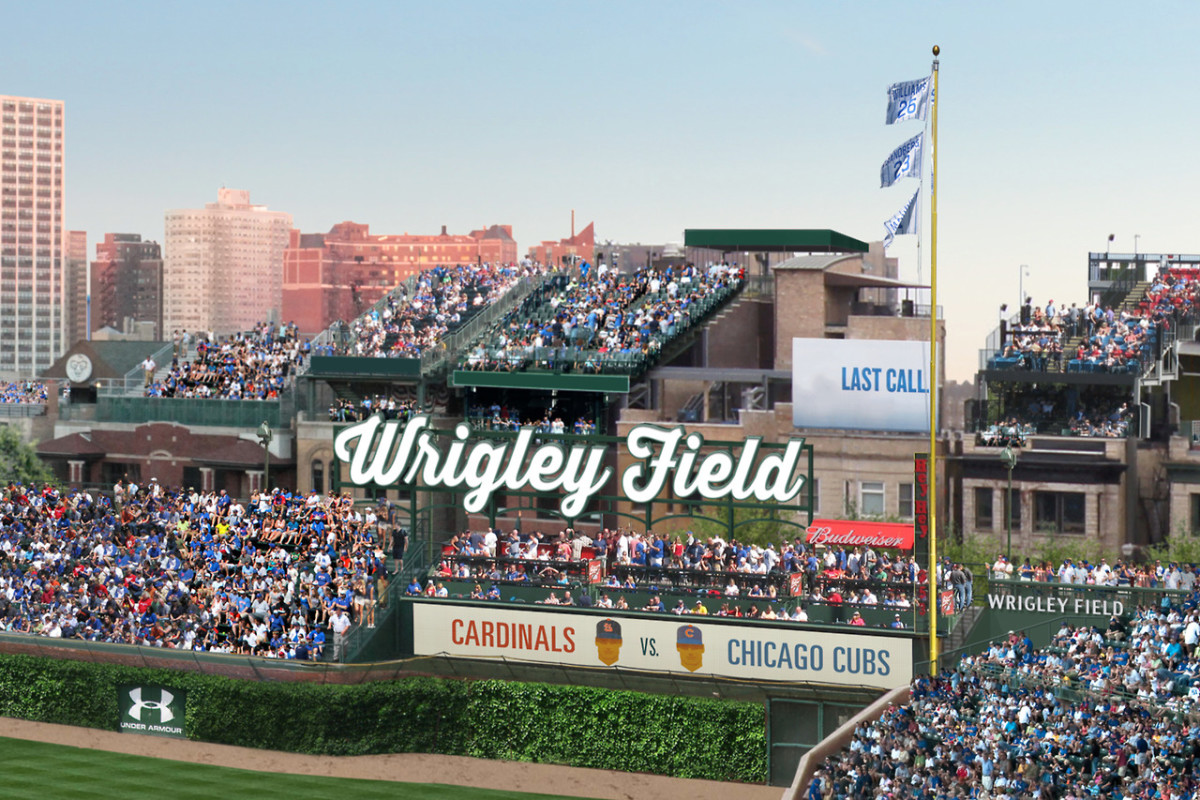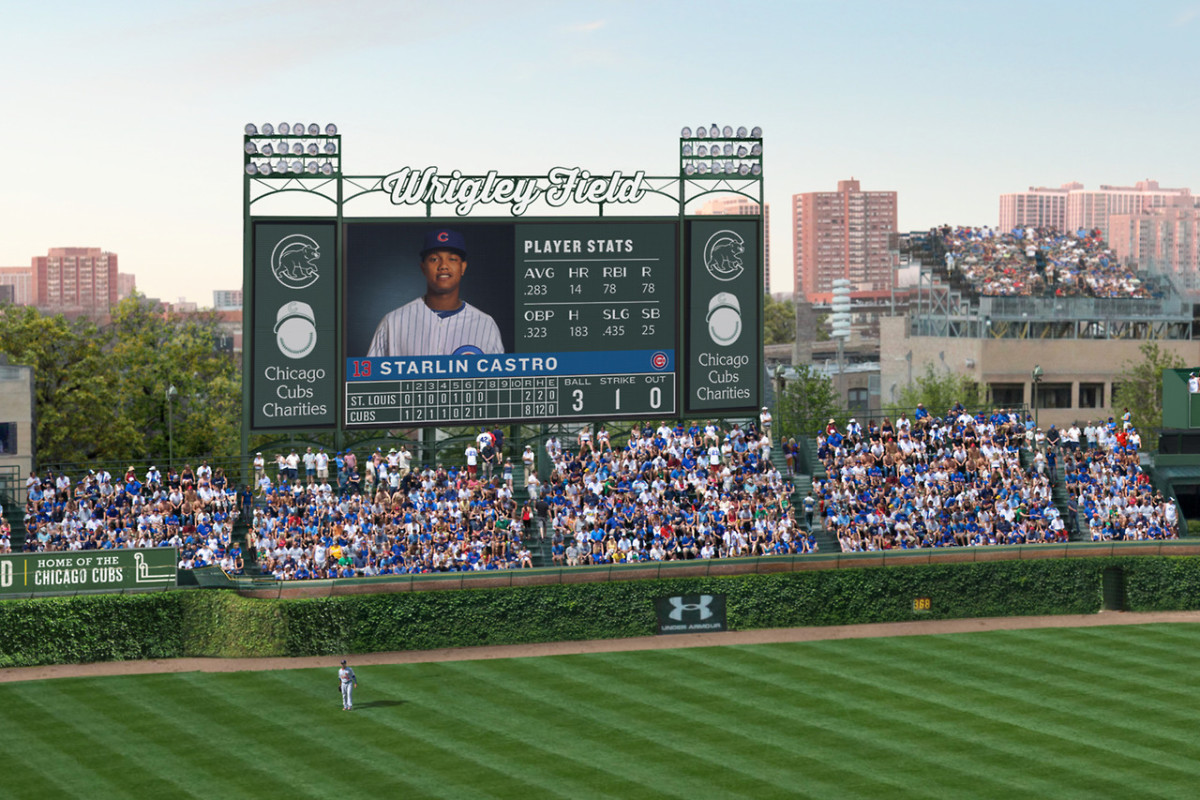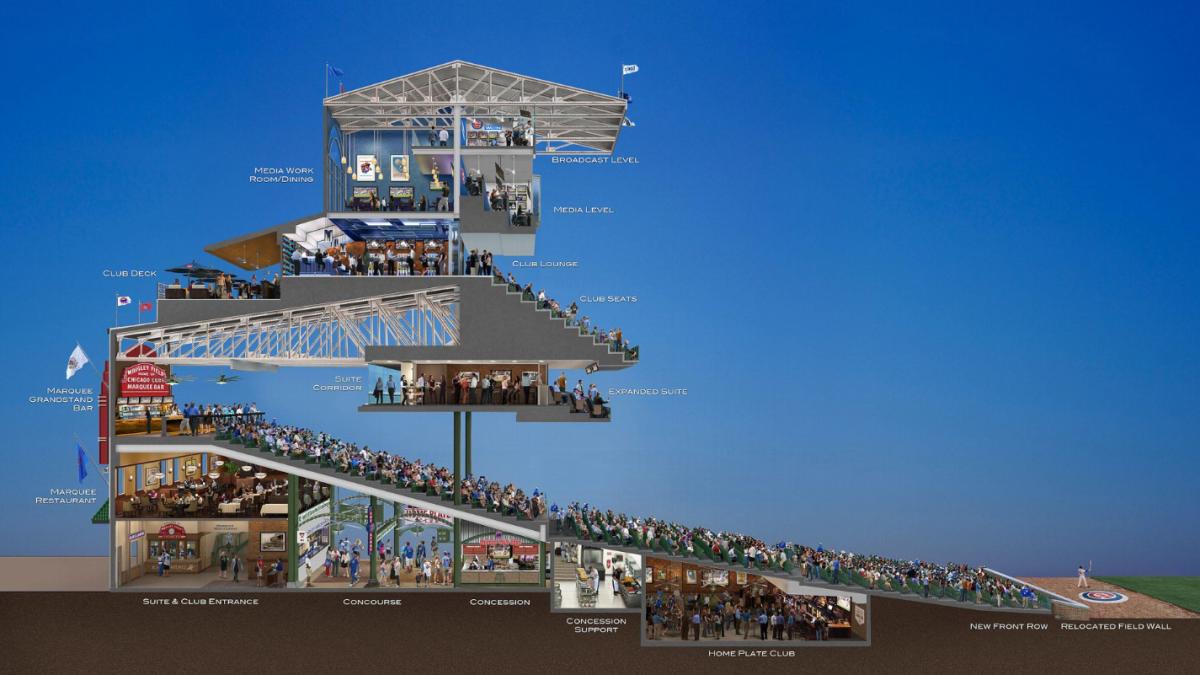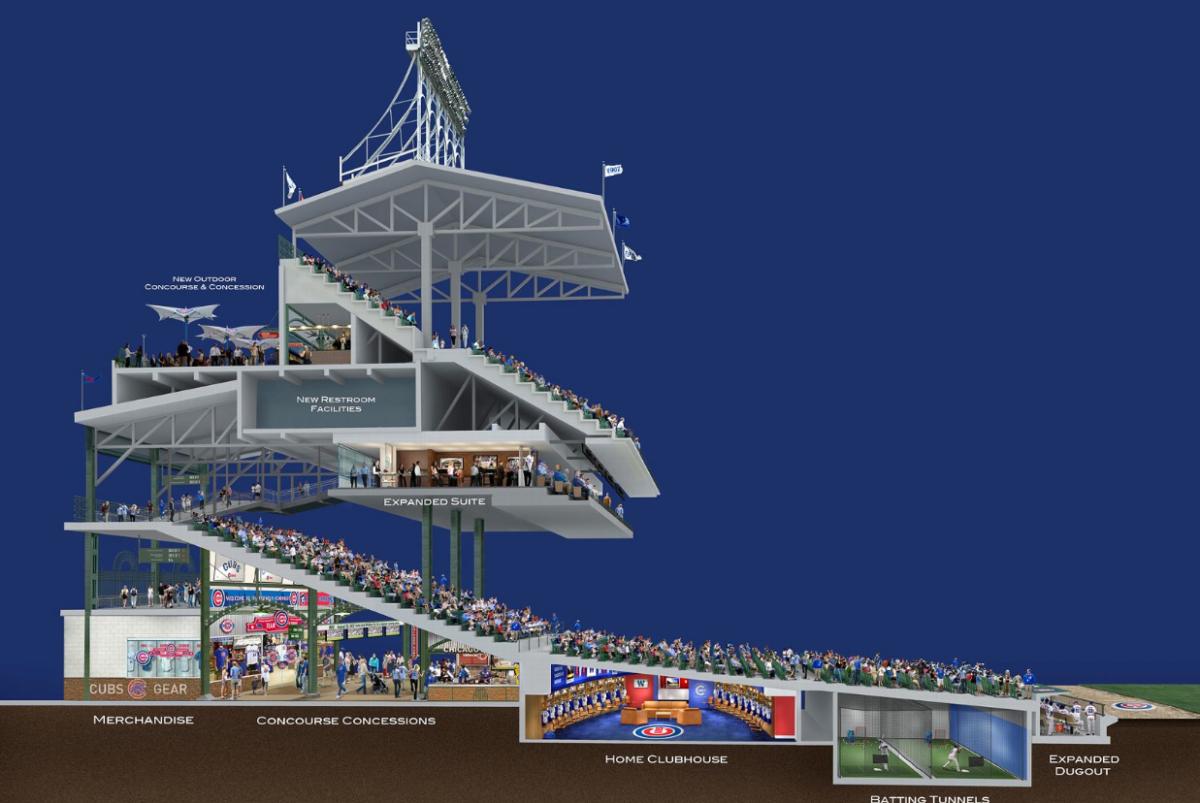Wrigley Field upgrades still locked in rooftop squabble

Wrigley Field upgrades still locked in rooftop squabble





Apparently a potential 650-square-foot see-through sign in Wrigley Field’s rightfield hasn’t gone over so well with the roughly 16 rooftop owners on Waveland and Sheffield avenues. Of course, the giant leftfield video board -- with advertising -- was already a contentious issue, but negotiations between the Cubs and rooftop owners collapsed this week, which could delay even longer the team's proposed renovations to the century-old ballpark.
As Cubs chairman Tom Ricketts continues to move toward his $300 million Wrigley Field upgrade project, the legal wrangling between the rooftop owners and the team hasn’t gone smoothly. Of course, Rickets comparing them to neighbors who pilfer your Showtime and the rooftop owners mentioning the Cubs in a defamation suit -- not as defendants, but as respondents -- hasn’t helped the bad blood. But what is really the issue here?
Ever since Wrigley Field opened in 1914 folks have tried to get a peek inside the ivy-covered walls for free. The owners of rooftops with views into the stadium’s outfield capitalized on that. But an official 20-year agreement with the team in 2004 put the two sides at ease, at least for the time being, allowing the rooftops to stay and giving the Cubs a 17 percent share in rooftop revenues.
But those signs. Those pesky signs. The Cubs say they need the video board and surrounding advertising and the already city-approved rightfield advertising signage to help pay for the renovations and improve the modernity of the stadium. Rooftop owners don’t want any potential view-obstructing additions.
But the roughly 6,000-square-foot video scoreboard in leftfield only stands as part of the larger plan that also includes a new three-story addition to the field that will expand clubhouse space, increase fan amenities and even add more in-game seating and suites.
Carl Rice, senior director of Wrigley Field event operations, says no matter the renovations to the underbelly, perimeter and even seating, the stadium’s feel won’t change.
“Whether 50 years ago or today, it has that same feel, the same proximity to the live action,” he says. “You can’t build charm and history, you need 100 years to do that, but of course all that space (of a modern park) makes you a little jealous.” By renovating, the club gets that back-of-house space and in-game advertising revenue.
Rice says that the original look of the park will tie in nicely with any upgrades. And he’s eager to ditch the nasty chain link fence that circles the concourses, visible from the exterior and interior, bringing back historic ornate ironwork that was there in the 1930s.
But the club hasn’t moved on the project yet, previously saying it wants a promise from rooftop owners that there will be no lawsuit to potentially slow down construction. There is no such promise. And, as of yet, we have no definitive date on the Wrigley Field renovations.
Tim Newcomb covers stadiums, design and technology for Sports Illustrated. Follow him on Twitter at @tdnewcomb.
